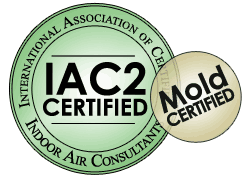Pyramid Home Inspections Call 951-536-1058 for a free price quote!

Pyramid Home Inspections
David Nasser 951-536-1058
Moreno Valley, CA 92553
Residential Foundation Insulation
Introduction
Homes being constructed today are more energy efficient than those built even just a few years ago, primarily due to significant improvements in building products and techniques as well as development of high-performance heating and cooling systems and other appliances. However, the benefits of foundation insulation are often overlooked. Heat loss from an uninsulated, conditioned basement may represent up to 50 percent of a home's total heat loss in a tightly sealed, well-insulated home. Foundation insulation is used primarily to reduce heating costs and has little or no benefit in lowering cooling costs. In addition to reducing heating costs, foundation insulation increases comfort, reduces the potential for condensation and corresponding growth of mold, and increases the livability of below-grade rooms.
Foundation types
Foundations are either full basement, slab-on-grade, or crawlspace. Deep frost lines and low water tables often make a full basement the primary foundation of choice. However, slab-on-grade with walkout basement construction is common and home additions often have crawlspace foundations.
Full basements
Basements can be insulated either on the interior or exterior. Interior insulation can use conventional 2´4 framing with batt or wet-spray insulation. Unless the vapor retarder covering on the batt insulation is fire rated, it should be covered with drywall. Rigid foam is also used on basement interiors. Furring strips are used to hold the foam insulation in place. Extruded polystyrene expanded polystyrene, or polyisocyanurate insulation boards can also be used. Fire codes require most foam insulation board to be covered with dry wall.
Exterior foundation insulation uses extruded or expanded polystyrene directly on the outside of exterior basement walls. Insulation exposed above grade must be covered to protect it from physical abuse and damaging effects of the sun. Typical cover materials include roll metal stock to match the siding, cementous board attached to the sill plate, or application of a stucco like finish.
A third option is to use a foam-form foundation system. Polystyrene foundation forms are set on conventional footings, much like building a Lego's® wall. Concrete is placed into the forms where it cures to form both the structural and thermal components of the basement wall. Exterior foam, either foam boards placed on the exterior of a conventional foundation or in a foam form wall system, may provide a concealed entry path for subterranean termites. Termites can tunnel through and behind many foam products. If exterior foam insulation is used, a continuous metal termite shield must be used between the top of the foundation and the sill plate to force termites out of the foam and into view. Even then, treatment with conventional termiticides to stop the infestation may be difficult. Foundation waterproofing, site and footing drainage, and termite treatments are similar for insulated and uninsulated basements. However, if exterior foam insulation is to be used, use waterproofing products compatible with the foam.
Crawlspaces
In many respects, crawlspace walls are just short basement walls. Exterior foam and foam-form insulation systems can be used. However, interior crawlspace wall insulation is usually either foam board or draped insulation. If foam insulation is used, it extends from the top of the foundation to the top of the footing. The cavity formed by the rim joist should be filled with fiberglass batts or a foam-in-place product. Most fire codes allow up to two inches of polystyrene exposed on the interior of a crawlspace before covering is required.
If crawlspaces are insulated with fiberglass or mineral wool batts, the batts are usually tacked to the sill plate and draped down and onto the floor. Four foot- wide batts incased in a plastic cover work well when installed horizontally. Conventional 16- or 24-inch-wide batts leave voids between the batts and do not perform as well.
Some jurisdictions require a ventilated crawlspace to help control moisture. Vent requirements are significantly reduced if the floor of the crawlspace is covered with plastic sheeting with joints overlapped and taped to reduce crawlspace moisture. If required, install operable vents so they can be closed. Don’t forget to fill the rim joist space with fiberglass batt or foamed-in-place foam to complete the insulation treatment.
The floor over the crawlspace can also be insulated. This raises the thermal envelope from the crawlspace walls to the space floor. While this technique offers many advantages, piping must be freeze proofed and heating and cooling ducts must also be insulated.
Slab-on-grade
Heat loss is greatest at or near the exterior grade. To reduce heating costs and reduce the cold-floor syndrome common to slab-on-grade construction, insulation is critical. Exterior foam insulation, similar to exterior basement insulation, works well. Insulation should extend from the top of the slab to the top of the footing. Foam insulation inside the footing is also common. It is necessary to provide a thermal break to prevent thermal wicking from the slab to the outside. Installing a pressure-treated nailer or beveled slab edge provide the thermal break while still allowing floor-covering attachment. Climate, cost of fuel, efficiency of heating equipment, and type of foundation determine the cost effective level of insulation.
Savings from insulated foundations vary with fuel price, heating equipment performance, and climate. The cost of full-basement foundation insulation will vary but builders have reported prices between $800 and $1,200. If the mortgage of a new home were increased by $1,200, the increase in home payment would be $106 annually for a 30- year, 8% loan. The combined heating and mortgage costs would be similar and the home would be more comfortable and provide a healthier indoor environment.
Frequently Asked Questions
If a basement is unfinished does it still need foundation insulation?
Yes, unless the floor above is insulated. Even if used only for storage and heating and cooling equipment the basement is thermally connected to the rest of the house.
Is floor insulation above a basement or a crawl space an alternative to foundation insulation?
Yes, but keep in mind that pipes, ducts and HVAC equipment located in the basement would then need to be insulated to meet the MEC and to protect pipes from freezing. Sometimes these can be grouped in a small area with insulated walls while the floor above the rest of the basement is
insulated.
Doesn’t placing insulation on the exterior improve energy performance?
If the basement incorporates passive solar design with a significant amount of south facing windows, exterior insulation will be beneficial, provided the walls are exposed to solar gain. In a
typical basement the energy savings are negligible.
Should the interior of foundation walls have vapor barriers?
If interior insulation is used, YES. The concrete must be allowed to dry, but moist basement air typical of Midwest summers should not be allowed to reach the cool wall where in can condense. Batt insulation specifically designed for the interior of foundation walls has a perforated poly facing that prevents air from circulating through the batt, but allows water vapor from the wall to escape.
Will foundation insulation increase the risk of termite entry?
Foundation insulation does not increase the risk of termine entry. If termites are present in the soil and wood is used in the building, the risk of infestation exists. Exterior insulation may reduce
the probability of early discovery and inhibit treatment when discovered.
Is an inspection band where foundation insulation is omitted to permit inspection for termites a good idea?
In some southern states with a high incidence of termite infestation, including, Florida, South and North Carolina, Georgia, Alabama, Mississippi, Louisiana, eastern Texas, southern and central California, Georgia, Tennessee, and Hawaii, rigid foam insulation is not allowed in contact with the soil. In other areas a six inch gap between the top of foundation insulation and any wood framing member is required to permit visual inspection for termites.
Will exterior foundation insulation materials be chemically attacked by dampproofing?
In can happen. Avoid ……and always follow the insulation and dampproofing manufacturer’s instructions.
What about water proofing?
Codes often require waterproofing instead of damproofing if the wall is adjacent to habitable space. Manufactures of some foam products offer specific recommendations for waterproofing of their foam systems.
How long will exterior foundation insulation last?
Properly installed foundation insulation, interior or exterior, should last as long as insulation installed any where else in the building.
Should foam insulation above grade be protected?
Foam above grade must be protected from both sun and physical damage. Ultraviolet light degrades or destroys most foams. In addition, damage from lawnmowers, balls, and other incidental
contact can degrade the appearance and performance of the foam. Common materials used to protect the foam above grade include two- or three-layer stucco finishes, brush-on elastomeric or
cementitious finishes, vertical vinyl siding, cement board, aluminum coil stock, and fiberglass panels.
Will insulating the foundation increase the risk of radon problems?
Radon entry into a home is through cracks and other opening below grade. The use of foundation insulation should minimize thermal stresses on the foundation and help minimize cracking, thus reducing of radon entry.
Should crawl space be ventilated?
The CABO One and Two Family Code requires one square foot of crawl space ventilation for each 150 square feet of “floor” area. Operable vents 1/10 as large can be used if a vapor barrier is
installed. Warm damp summer air can condense on the cool earth, even when covered with a poly vapor diffusion retarder, increasing the risk of crawl space moisture problems. Installing a
vapor barrier and closing the operable vents is preferred. If local code interpretation requires crawl space ventilation, insulating the floor and incorporating a vapor barrier is preferred.
Do foam insulation boards installed on the interior require fire protection?
All foams require thermal protection equal to ½ inch of gypsum wall board when installed on the interior of a building, including a crawl space. The only exception is Celotex Thermax
polyisocyanurate which may be installed without a thermal barrier where approved by the local building code official.
Are insulating concrete form (ICF) systems less expensive than an insulated poured in place concrete wall?
ICFs can be competitive but costs are project specific. Foam used in these systems should address the same concerns outlined above for foam board.
Here's what our clients say about us
"David's work is the best! Always gets the job done right away!! Would definitely recommend him to all my clients"
Sunny Wang - Etopbroker
I love the Idyllwild area. If you are looking to buy or sell a home in Idyllwild, give me a call to book your home inspection today!
Need a website for your business?




